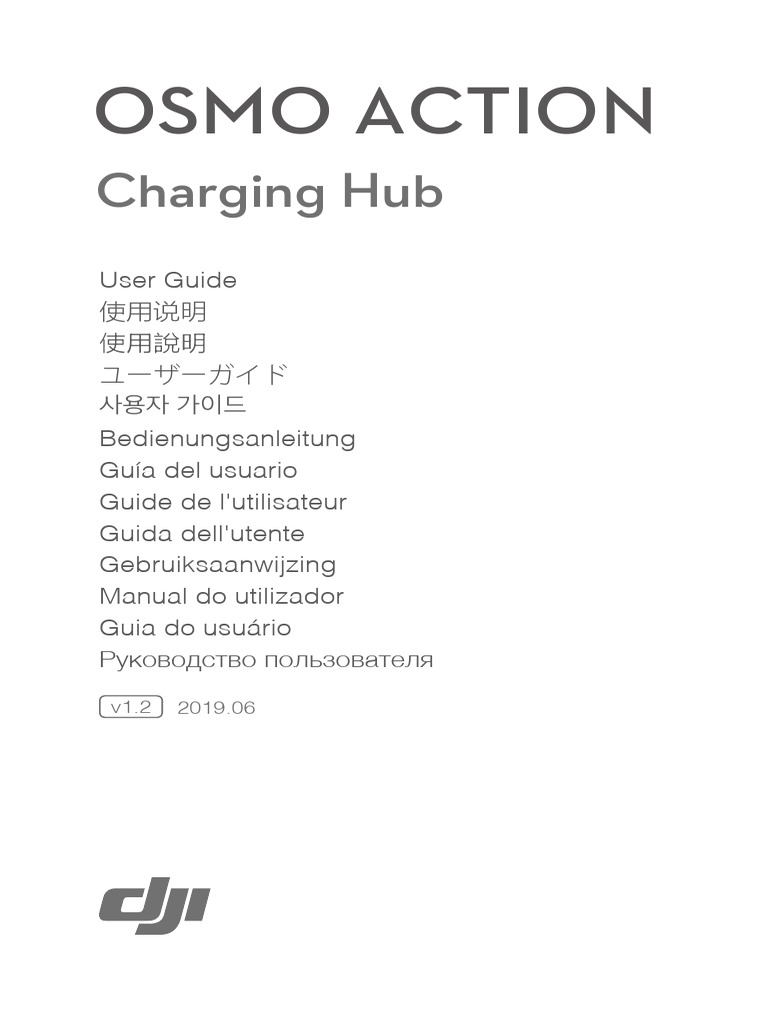The Ultimate Guide: 10 Winning Strategies

In the ever-evolving world of digital marketing and online presence, standing out and achieving success requires a strategic approach. With countless businesses vying for attention, having a comprehensive strategy is key to ensuring your brand or project captures the spotlight. This guide aims to unravel the secrets behind crafting a winning online presence, offering actionable strategies to propel your venture forward. Whether you're a seasoned entrepreneur or a newcomer to the digital realm, these insights will provide a roadmap to help you navigate the competitive landscape and establish a solid online foundation.
Defining Your Digital Presence: A Foundation for Success

The digital landscape is vast and dynamic, offering countless opportunities for businesses to connect with their target audiences. However, with this abundance of possibilities comes the challenge of defining a unique and effective digital presence. A well-defined online presence is not just about having a website or social media accounts; it’s about creating a cohesive and strategic digital ecosystem that reflects your brand’s identity, values, and goals.
Let's delve into the heart of this topic and explore the key elements that contribute to a robust digital presence.
Brand Identity and Value Proposition
At the core of any successful digital strategy is a clear understanding of your brand’s identity. This includes defining your brand’s personality, voice, and the unique value it brings to the market. Your brand’s identity should resonate with your target audience and differentiate you from competitors.
For instance, consider a fictional company, "Eco-Tech Solutions," which specializes in sustainable technology. Their brand identity might revolve around themes of environmental stewardship, innovation, and accessibility. This identity should be consistently reflected across all digital touchpoints, from their website's design and content to their social media posts and advertising campaigns.
| Brand Element | Eco-Tech Solutions' Approach |
|---|---|
| Visual Identity | Nature-inspired color palette, modern fonts, and eco-friendly imagery. |
| Voice and Tone | Engaging, informative, and passionate, focusing on the benefits of sustainable tech. |
| Unique Value Proposition | Providing cutting-edge sustainable solutions that are accessible and affordable. |

Target Audience Analysis
Understanding your target audience is critical to crafting an effective digital presence. This involves detailed research and analysis to identify demographics, preferences, behaviors, and pain points of your ideal customers.
For Eco-Tech Solutions, their target audience might primarily consist of environmentally conscious consumers, businesses seeking sustainable practices, and government entities focused on green initiatives. By analyzing their audience's needs and preferences, Eco-Tech can tailor their digital content and strategies to resonate effectively.
Content Strategy
Content is a powerful tool in the digital arena. A well-defined content strategy ensures that your brand’s message is communicated effectively and consistently across all digital platforms. This strategy should encompass various types of content, including blog posts, videos, infographics, and social media updates, each tailored to the preferences and engagement patterns of your target audience.
For instance, Eco-Tech Solutions might create a series of educational videos on their YouTube channel, demonstrating the benefits and ease of use of their sustainable products. They could also publish informative blog posts on their website, offering insights into the latest trends and innovations in sustainable technology.
Digital Platform Selection
Choosing the right digital platforms is crucial for reaching and engaging your target audience. This decision should be informed by your brand’s identity, target audience analysis, and content strategy. Different platforms offer varying levels of engagement and reach, so it’s essential to select those that align best with your goals and the preferences of your audience.
In the case of Eco-Tech Solutions, they might focus on platforms like LinkedIn and Instagram, which cater to a business-oriented and visually-driven audience, respectively. They could also leverage industry-specific forums and online communities to establish themselves as thought leaders in sustainable technology.
Strategy 1: Mastering the Art of Search Engine Optimization (SEO)

In the digital realm, visibility is paramount. Search Engine Optimization (SEO) is a powerful tool that can significantly boost your online presence and drive organic traffic to your website. By optimizing your content and website structure, you can enhance your search engine rankings, making your brand more discoverable to your target audience.
Keyword Research and Selection
The foundation of effective SEO lies in thorough keyword research. This involves identifying the specific terms and phrases your target audience uses when searching for products or services like yours. By understanding these keywords, you can create content that resonates with your audience and aligns with their search intent.
For example, if your business specializes in vegan cosmetics, you might identify keywords such as "cruelty-free makeup," "natural skincare," or "organic beauty products." These keywords should then be strategically incorporated into your website's content, titles, and meta descriptions to improve your search engine visibility for those specific terms.
| Keyword | Search Volume | Competition |
|---|---|---|
| Vegan Cosmetics | 10,000 | High |
| Cruelty-Free Makeup | 5,000 | Medium |
| Natural Skincare | 8,000 | Low |
On-Page Optimization
On-page optimization refers to the process of optimizing individual web pages to rank higher and earn more relevant traffic in search engines. This involves a range of tactics, including optimizing title tags, meta descriptions, header tags, and URL structures.
For instance, when optimizing a web page for the keyword "natural skincare," you might craft a compelling meta description that highlights the benefits of your natural skincare products, enticing users to click through to your site. You would also ensure that the page's header tags and content are relevant and focused on this keyword.
Content Optimization
High-quality, relevant content is a cornerstone of effective SEO. This includes blog posts, product descriptions, and other forms of written content on your website. By creating content that provides value to your audience and incorporates your target keywords naturally, you can improve your search engine rankings and establish yourself as an authority in your industry.
Consider a blog post titled "The Benefits of Natural Skincare: A Comprehensive Guide." This content could delve into the advantages of using natural skincare products, providing detailed insights and expert advice. By incorporating relevant keywords throughout the post, you enhance its visibility in search engine results, making it more discoverable to your target audience.
Technical SEO
Technical SEO involves optimizing the back-end of your website to ensure it’s technically sound and search engine-friendly. This includes optimizing website speed, ensuring mobile responsiveness, and implementing proper website structure and navigation.
For instance, you might use a content delivery network (CDN) to enhance your website's speed and performance, especially for users accessing your site from different geographical locations. You would also ensure that your website is mobile-friendly, given the increasing number of users accessing the internet via mobile devices.
Strategy 2: The Power of Content Marketing
Content marketing is a strategic approach focused on creating and distributing valuable, relevant, and consistent content to attract and retain a clearly defined audience—and, ultimately, to drive profitable customer action. In today’s digital landscape, where consumers are inundated with information, providing high-quality, engaging content is crucial for establishing your brand as a trusted authority.
Identifying Your Content Niche
The first step in content marketing is identifying your niche. This involves understanding your target audience’s pain points, interests, and the information they seek. By pinpointing these areas, you can create content that truly resonates with your audience, providing value and establishing your brand as a go-to resource.
For instance, if your business specializes in sustainable fashion, your content niche might focus on topics such as eco-friendly materials, ethical production practices, and tips for building a sustainable wardrobe. By consistently creating content around these themes, you position your brand as an expert in sustainable fashion, attracting like-minded consumers.
Creating Engaging Content
Engaging content is key to capturing and retaining your audience’s attention. This involves creating content that is not only informative but also entertaining, visually appealing, or interactive. The goal is to make your content stand out and encourage your audience to take action, whether that’s making a purchase, subscribing to your newsletter, or sharing your content with others.
Consider a series of blog posts on sustainable fashion tips. These posts could include visually appealing infographics, step-by-step guides, or even interactive quizzes. By offering a mix of content types and engaging formats, you enhance the user experience and increase the likelihood of conversion.
Content Distribution and Promotion
Creating great content is only half the battle. The other half is effectively distributing and promoting your content to reach your target audience. This involves leveraging various channels, such as social media, email marketing, and influencer partnerships, to ensure your content reaches a wide and relevant audience.
For instance, you might share your blog posts on social media platforms like Instagram and Twitter, using relevant hashtags to increase visibility. You could also consider collaborating with influencers in the sustainable fashion space to promote your content and expand your reach. Additionally, incorporating email marketing strategies can help you directly engage with your subscribers, keeping them informed about your latest content and offerings.
Measuring Content Marketing Success
To ensure your content marketing efforts are successful, it’s crucial to measure and analyze the performance of your content. This involves tracking key metrics such as engagement rates, click-through rates, and conversion rates. By analyzing these metrics, you can understand what content resonates most with your audience and make data-driven decisions to refine and improve your content strategy.
| Metric | Definition | Importance |
|---|---|---|
| Engagement Rate | Measures the level of audience interaction with your content, including likes, shares, and comments. | High engagement indicates that your content resonates with your audience and encourages interaction. |
| Click-Through Rate (CTR) | The ratio of users who click on a link to the number of total users who view a link. | A high CTR suggests that your content is compelling and relevant, prompting users to take action. |
| Conversion Rate | The percentage of users who take a desired action, such as making a purchase or signing up for a newsletter. | Conversion rates indicate the effectiveness of your content in driving profitable customer action. |
Strategy 3: Unleashing the Potential of Social Media
Social media platforms have revolutionized the way brands connect with their audiences. With billions of users across various platforms, social media offers an immense opportunity to engage, interact, and build relationships with potential and existing customers. A well-crafted social media strategy can amplify your brand’s reach, enhance its visibility, and foster a community around your products or services.
Choosing the Right Social Media Platforms
The first step in developing a successful social media strategy is selecting the platforms that best align with your brand and target audience. Each social media platform has its own unique culture, demographics, and engagement patterns. Understanding these nuances is crucial for effective content creation and audience engagement.
For instance, if your brand caters to a younger, more casual audience, platforms like TikTok or Snapchat might be more suitable due to their popularity among Gen Z and Millennials. On the other hand, if your target audience is primarily professionals or businesses, LinkedIn could be a more strategic choice.
| Platform | Demographics | Engagement Style |
|---|---|---|
| Younger audience, highly visual | Engaging through visual content, captions, and hashtags | |
| Professionals, business-oriented | Sharing industry insights, networking, and job opportunities | |
| Wide range of demographics, news-focused | Real-time updates, engaging in conversations, and sharing news |
Creating Compelling Social Media Content
The key to success on social media lies in creating content that resonates with your audience and encourages engagement. This could include a mix of visual content (images, videos, infographics), written content (captions, blog excerpts), and interactive elements (polls, quizzes, contests). The goal is to provide value, entertain, and spark conversations.
For example, if your brand is a sustainable clothing line, you might create a series of Instagram Reels showcasing behind-the-scenes footage of your production process, highlighting your commitment to ethical practices. You could also share customer testimonials or host a giveaway to encourage engagement and build a community around your brand.
Engaging with Your Audience
Social media is a two-way street. It’s not just about broadcasting your content; it’s about fostering a dialogue with your audience. Responding to comments, addressing customer inquiries, and joining conversations relevant to your brand can help build trust and loyalty.
Imagine your brand has a Twitter account. You could actively participate in industry-related conversations, share industry news and insights, and respond to tweets mentioning your brand or relevant topics. This level of engagement not only shows your audience that you value their input but also positions your brand as an active participant in the conversation, fostering a sense of community.
Measuring Social Media Success
To assess the effectiveness of your social media strategy, it’s essential to track and analyze key metrics. These metrics can help you understand what content resonates with your audience, identify areas for improvement, and make data-driven decisions to enhance your social media presence.
| Metric | Definition | Importance |
|---|---|---|
| Reach | The number of unique users who see your content | Indicates the breadth of your audience and the potential for brand awareness |
| Engagement Rate | Measures the level of audience interaction with your content, including likes, shares, comments, and retweets | High engagement suggests that your content resonates with your audience and encourages interaction |
| Conversion Rate | The percentage of users who take a desired action, such as clicking a link, making a purchase, or signing up for a newsletter | Conversion rates indicate the effectiveness of your social media efforts in driving profitable customer action |
Strategy 4: Email Marketing: A Direct Line to Your Audience

Email marketing is a powerful tool that allows businesses to maintain a direct line of communication with their audience. It’s a personalized and targeted approach that can foster relationships, drive engagement, and ultimately, convert leads into customers. With the right strategy, email marketing can be an incredibly effective way to nurture and retain customers, making it an essential component of any digital marketing arsenal.
Building an Email List
The foundation of a successful email marketing campaign is a robust and engaged email list. This list should consist of individuals who have opted in to receive communications from your brand, ensuring that your messages are reaching a willing and interested audience.
To build your email list, you can employ various strategies. This might include offering incentives such as discounts or exclusive content in exchange for email addresses, placing



